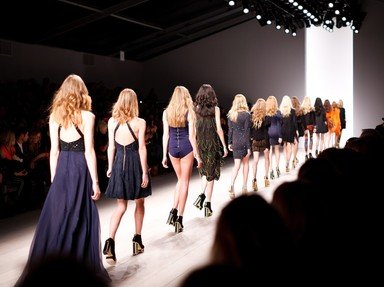Quiz Answer Key and Fun Facts
1. According to fashion writer Barbara Rutledge-Johns, before she leaves the house a woman should stand in front of a full-length mirror and count the number of clothing/accessory items she can see, scoring one for each pant leg or stocking, one for each shoe, one for each earring, and so on. What is the absolute maximum she can score and still be considered well-dressed?
2. According to Stacy London and Clinton Kelly of TLC's 'What Not to Wear', who or what is a woman's best friend?
3. Who created the television show 'What Not to Wear'?
4. Vogue Magazine has long held the number one spot as a fashion Bible for women around the world. When was the magazine first published?
5. Who established the first high-fashion salon in Paris?
6. In summertime, elderly gentlemen can be seen in Canadian resort towns wearing (shudder) pastel slacks and shirts (baby blue, lemon yellow, pistachio green, and so on) with white belts and shoes. We have a term for this startling fashion statement. It's called...
7. Your great-great-grandmother probably wore a fascinator when she stepped out on the town with her best beau. What precisely was a fascinator?
8. One of the oddest fashion innovations of the 1960s (a decade noted for an explosion of odd fashion innovations) was the...
9. What was the trendy man-about-town wearing in the 1970s?
10. Name the iconic clothing item that originated in the United States and is now worn throughout the world. Do you really need a hint?
Source: Author
Cymruambyth
This quiz was reviewed by FunTrivia editor
DakotaNorth before going online.
Any errors found in FunTrivia content are routinely corrected through our feedback system.
